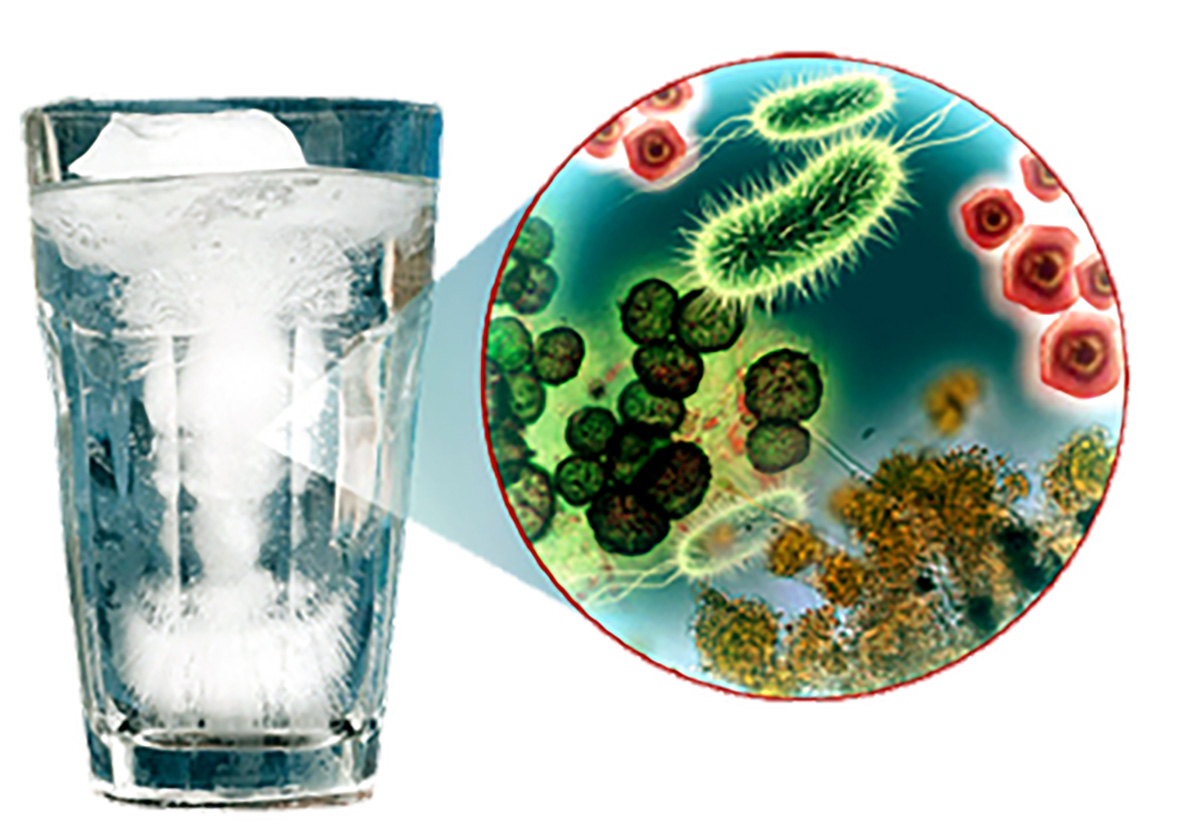
By Becky Schuerman, Extension Domestic Water/Wastewater Associate
Total coliform bacteria is all around us. They are in the soil and vegetation throughout our environment and are generally harmless. Total coliform bacteria in drinking water typically doesn’t have a health risk associated with it and if water testing only detects it, the source is probably environmental and not fecal contamination. Total coliform bacteria is often considered an indicator there may be something more serious contaminating a drinking water system, specifically E. coli bacteria. Total coliform bacteria are colorless, odorless and tasteless and the only way it can be detected in drinking water is through submitting a sample for laboratory testing.
Bacterial contamination can result from a number of sources. These sources include surface runoff containing animal waste from feedlots, dog runs or other locations where animal waste is deposited or piled. Human waste can also be a bacterial contamination source, most often from a failing onsite wastewater system such as residential septic tanks, laterals, mounds system or lagoons. Additional contamination sources include insects, rodents or animals that may get trapped in a well and die, thus introducing bacteria to the well water. Flooding events where wellheads are submerged by floodwaters that commonly contain high levels of bacteria are yet another source of contamination.
As said earlier, not all bacteria present a health risk, but some do. E. coli is a subgroup of the coliform bacteria group. Most E. coli bacteria are harmless and exist in the intestines of people and warm-blooded animals. However, some strains can cause illness. If E. coli bacteria is detected in a water sample, it is usually an indicator of recent fecal contamination of the water. That means there is a greater risk that water-borne pathogens are present.
Proper well location, construction, and maintenance are key to reducing vulnerability to bacterial contamination in all types of water wells. In accordance with the Nebraska Safe Drinking Water Act, public water systems adhere to a mandatory total coliform testing schedule. It is recommended that private wells be tested for total coliform bacteria after the well is initially drilled and annually thereafter. Testing should also happen if a well has been unused for one or more years, after repairs are made to any of the well components, if the well is inundated by flood waters or surface runoff or if contamination is suspected due to prolonged illness. Treatment is achieved through disinfection, most commonly by shock chlorination. A Nebraska-licensed water well professional can assist well owners with decontaminating a private water well system.
Please go to https://water.unl.edu/article/drinking-water/nebguides NebGuide G1826, “Drinking Water: Bacteria” for further information.